Here’s a challenge. Next time you climb Snowdon, try NOT to spot an Osprey Talon rucksack. (Clue: we’ve never managed it.) In the world of hiking backpacks, the Talon (and women’s Tempest) is all-conquering: presented at eye-level in every decent outdoor shop, ubiquitous in hiker’s pubs from the Port William to the Pen-y-Gwryd.
What’s its secret? Well, it aims to cram every possible feature needed for a day-hike into a sleek, compact package that is flexible and breathable on the go. That’s not to say it’s perfect for every walker though; read on and we’ll tell you what (and who) the Talon daypack is perfect for, and areas where alternatives might work better for you.
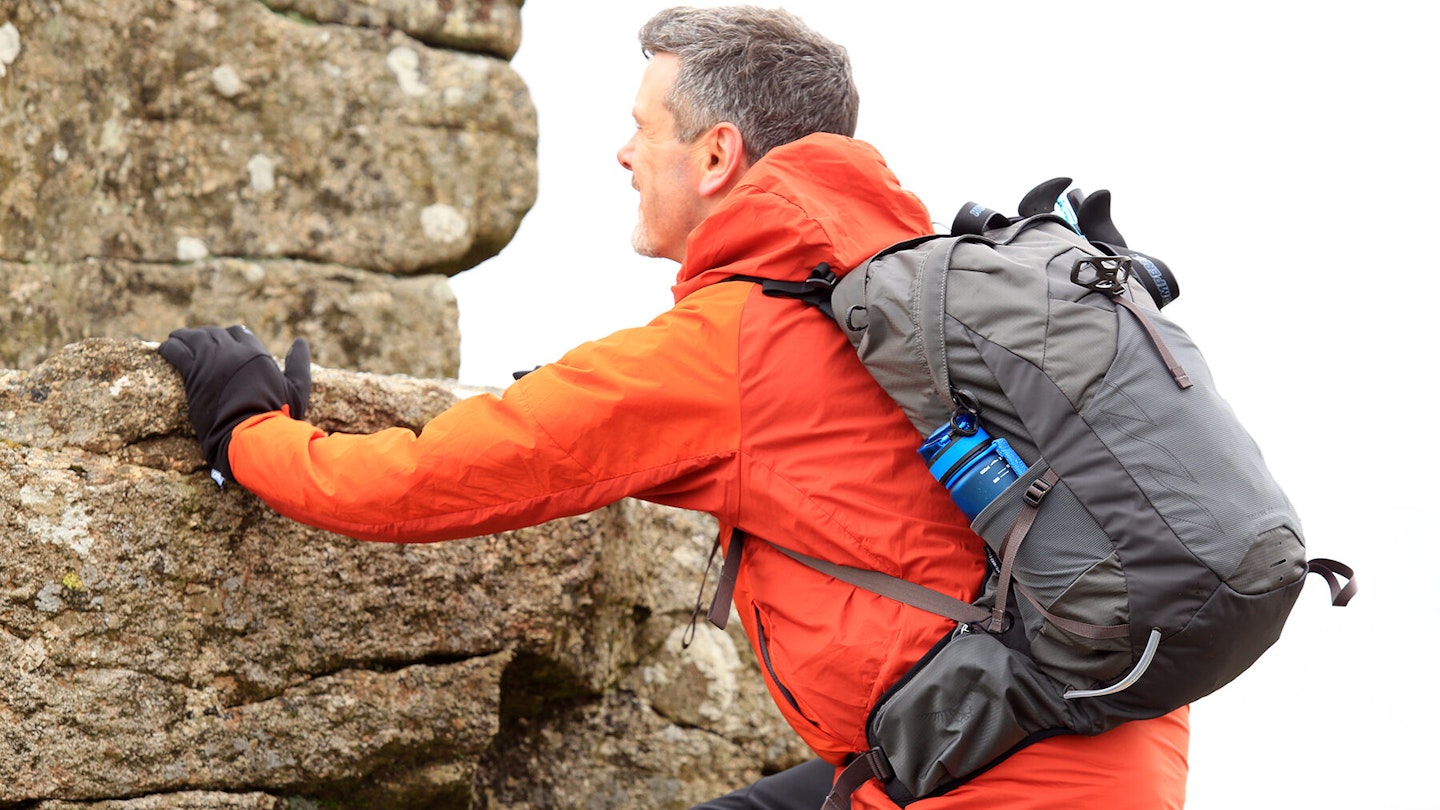 LFTO
LFTOwww.osprey.com
Pros
- Exceptional comfort
- Dynamic movement
- Ventilated back system
- Packed with features
- Loads of storage options
- Bluesign-approved main fabric
Cons
- Too fussy for those who prefer a minimalist pack
- Expensive
- Not as well-ventilated as a suspended back system
- No raincover
| Weight | 901g |
| Volumes | 6L waistpack, 11L, 22, 26L, 33L, 36L, 44L, 55L |
| Materials | Bluesign approved and recycled 100D x 210D and 420D nylon w/ PFC-free DWR |
| Max weight capacity | 4.5 - 9kg |
Overview
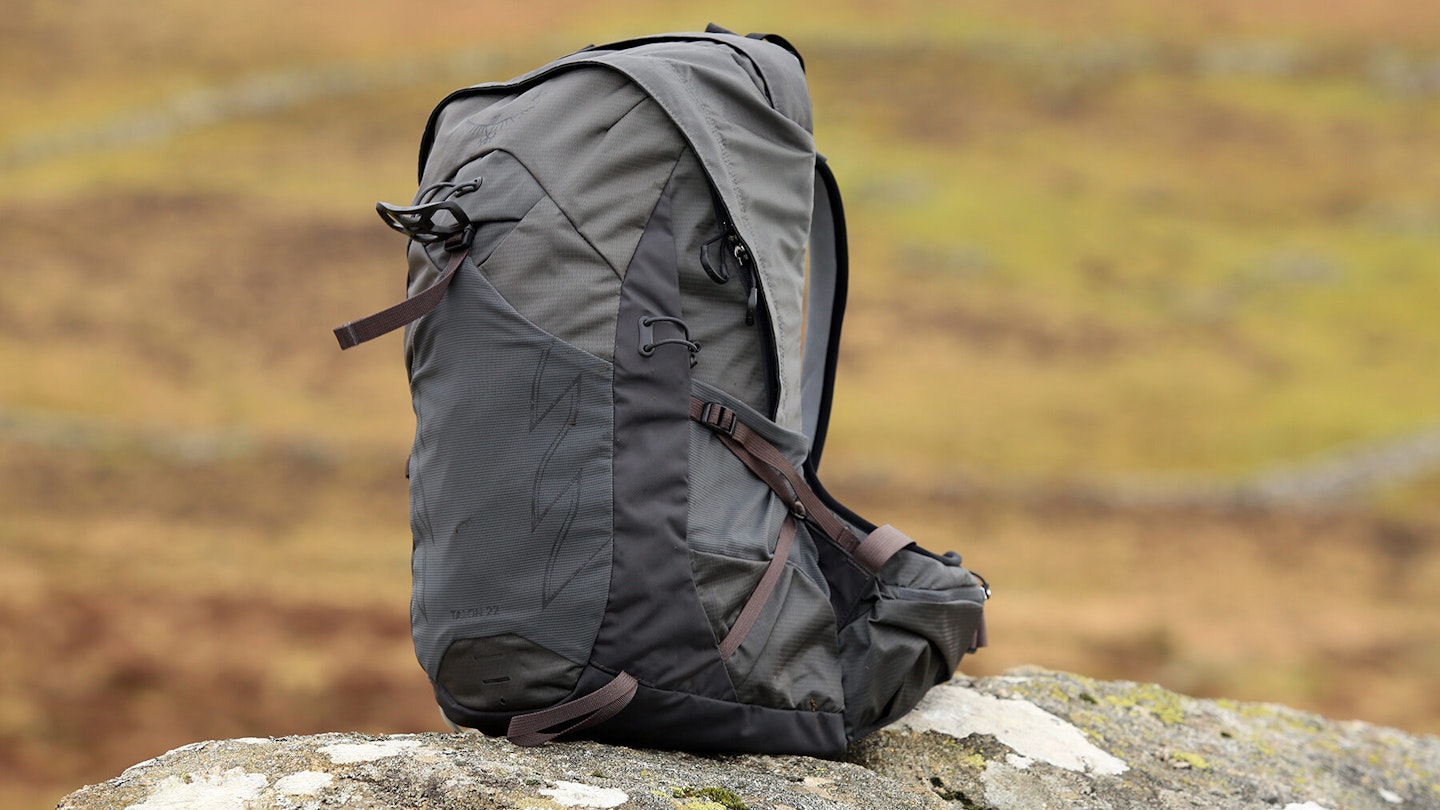
The Talon 22 is part of the wider Talon range, which aims to have an option for pretty much every single day walk you could embark upon.
The range comes in capacities of 6 (waist pack), 11, 22, 26, 33, 36, 44 and 55 litres. There are also ‘Talon Pro’ options: upgraded versions targeted at Alpinism and bikepacking, in capacities of 20, 30 and 40 litres. You can also get a super-sustainable Talon Earth at 22L, and there are now two ultra-lightweight multi-sport variants called Talon Velocity, in 20 and 30 litre versions.
The corresponding range for women is called Tempest, with standard versions of 6, 9, 20, 24, 30, 34, 40, and 50L, plus Tempest Pro at 20, 30 and 40; and Velocity at 20 and 30. They have also introduced an Extended Fit (plus-size) version of the 20. (There are also Junior versions, but that’s enough to be going on with.)
The Talon 22 and Tempest 20 are the core day hiking options. Both will easily carry the basics you’d need for any walk anywhere: waterproof, warm layer, first aid kit, lunch, water bottle, walking poles and bag of essentials (compass, batteries, head torch etc). They also have an abundance of storage compartments to help you divide the load and keep essential stuff close to hand.
Shop this product
While these packs are great for all kinds of walks, the sophistication of the back system and flexibility of the harness mean they are particularly well-suited to demanding day-hikes, including mountain walks. Like all packs across the range, this pack is made with recycled and bluesign-approved high-tenacity nylon, treated with a PFC-free DWR.
Our tested example is a rather bland and functional dark grey; it also comes in more vivid blue, green and light grey colourways, as well as black. So that’s the context. Let’s look specifically at the Talon 22.
Back system: panel, frame and harness
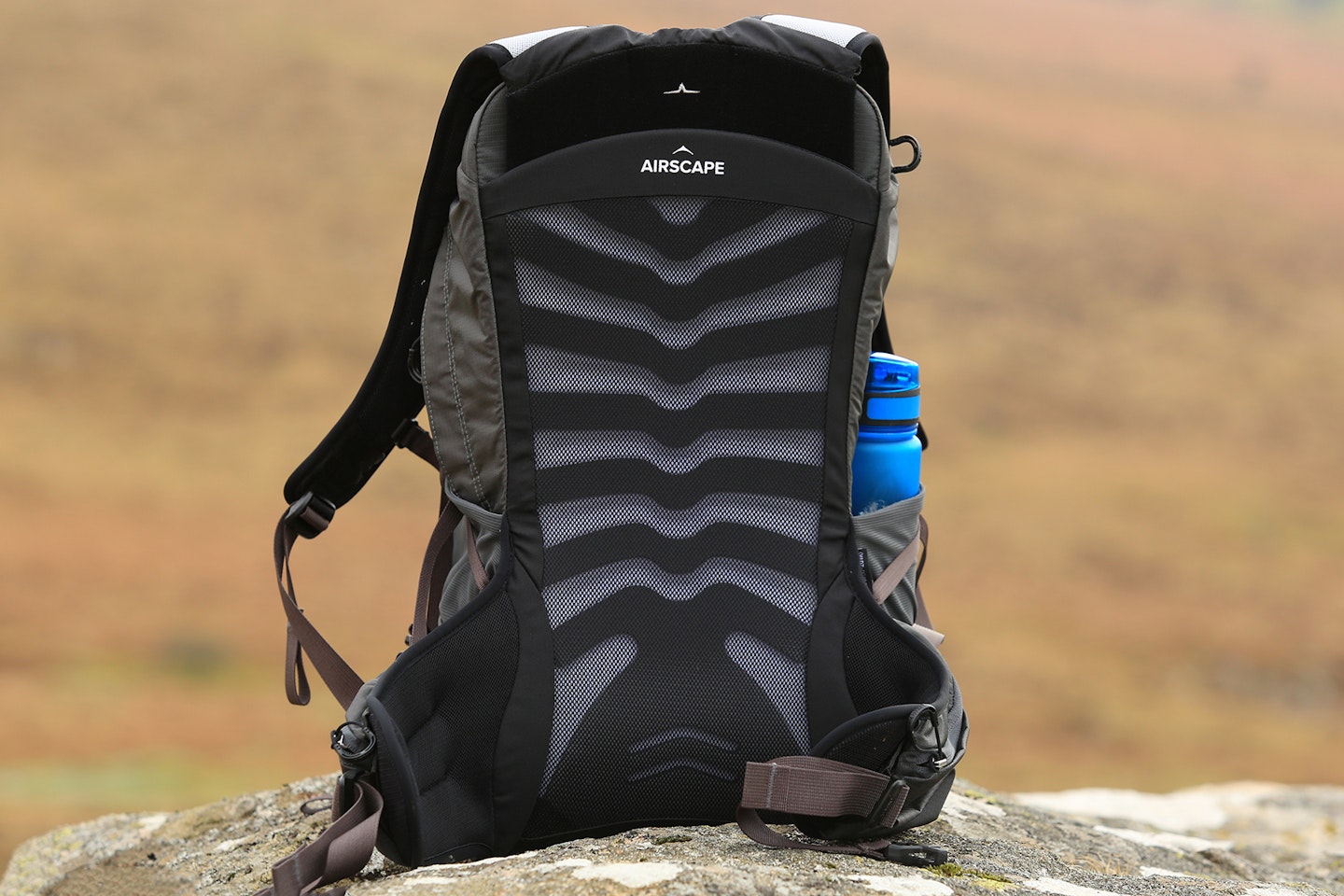
The Talon 22 uses an ergonomically-shaped AirScape back panel made of injection-moulded, die-cut foam overlaid by light mesh. This keeps the load close to your body, with airflow channels providing ventilation.
Shop this product
This contrasts with Osprey’s other core day-hiking range – Stratos for men and Sirrus for women – in which the load is held away from your back by a concave, suspended system called AirSpeed, which creates a wide, curved space for maximum air circulation and ventilation.
Why would you choose one over the other? Well, you might choose Stratos/Sirrus if you are prone to sweating heavily, or if you are most likely to use the pack in summer. That said, we’ve used the Talon in full summer heat and, while clearly not quite as super-breathable as the counterpart, it has still performed extremely well in terms of ventilation.
The Talon back system has two advantages. Firstly, there is nothing to impinge on the storage space (concave systems like the one used on the Stratos crimp the storage space as they push the load away). Secondly, balance. Some hikers feel that a suspended system affects their centre of gravity, and thus their balance, especially if they like scrambling. If that sounds like you, then the Talon’s back system may work better for you.
As a final contrast: the Talon 22 is £20 cheaper than the comparable Stratos 24 (£135 vs £155).
Another key selling point is the Talon’s harness and hip-belt, which together form a system called BioStretch that is designed to move with your body and provide optimal stability. The lumbar section, hip-belt and back system merge together with no gaps or bumps, meaning that the whole assembly should wrap snugly round your hips and lower back. This allows the system to move as you do, and minimises the risk of rubbing.
Shop this product

The hip-fins are lightly padded. Some similar rival packs have heavily cushioned fins with ventilation; the Talon doesn’t, but this keeps the weight down, and the fins are so light that they offer good support without trapping excess heat.
A Crossbody ErgoPull system allows you to pull the hip-belt close to your body; although in fairness pretty much any comparable rucksack of this size will do that. There are huge pockets on both hip-fins, both with zips.
The harness has foam padding with holes for ventilation, providing pretty much the perfect balance between weight-bearing strength and airy breathability. The chest strap is on a slider, which makes adjustment really easy. (Many comparable packs are now using daisy chains for their chest straps, which are more fiddly to adjust.) And it has a built-in whistle.
There is no basement compartment or sub-division within the main space (which would be useful for storing wet kit), but then you generally wouldn’t expect to find those in a pack of this size anyway.
Shop this product
All this makes the Talon 22 hugely impressive. We took it on some seriously strenuous walks in the Pennines, the Lake District and across Dartmoor. Its performance was superb: moving easily with shoulders and hips, ventilating excess heat pretty well considering it’s not a suspended back system, and stashing every item in a sensible place.
Back length and sizing
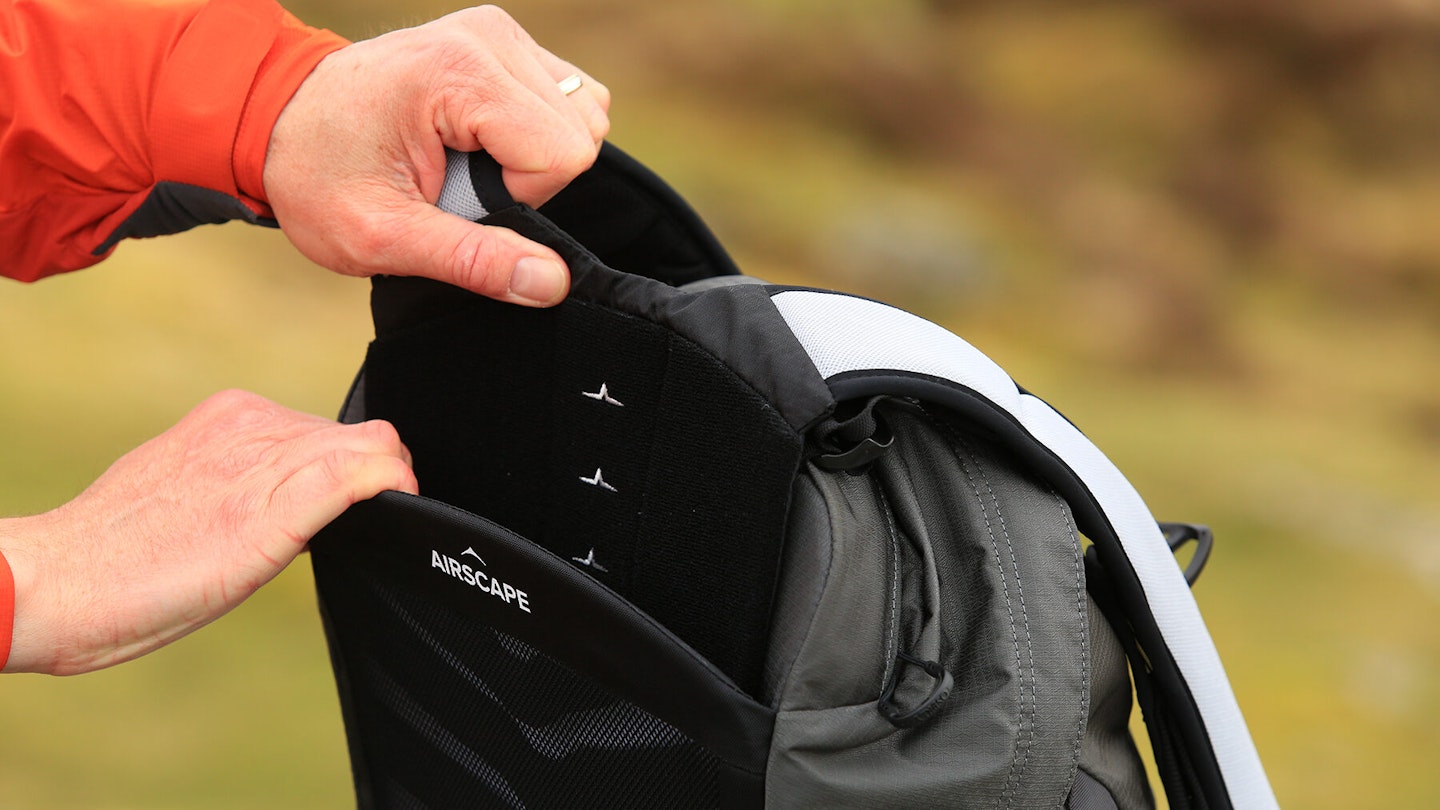
The Talon 22 comes in two lengths: Small/Medium (designed for back lengths of 43 to 51cm) and Large/X-Large (51 to 56cm).
But in both versions, the length of the back system is adjustable using a Velcro panel (see photo above), making it easy to finesse the length to your precise liking.
Both of the above virtues are rare in a pack of this size and spec, which is one of the key reasons the Talon is so popular. It’s also another point of divergence with the Stratos/Sirrus range, whose back lengths are not adjustable.
Our tester is 5ft 9ins and was testing a Small/Medium. He found the longest setting very comfortable.
In 2022, Osprey launched an Extended Fit range for plus-size walkers. It includes the women’s Tempest 20, which is designed to fit up to 70-inch hips. The range previously included the men’s Talon 22, although this is currently not showing on Osprey’s website.
Shop this product
Volume, shape and weight
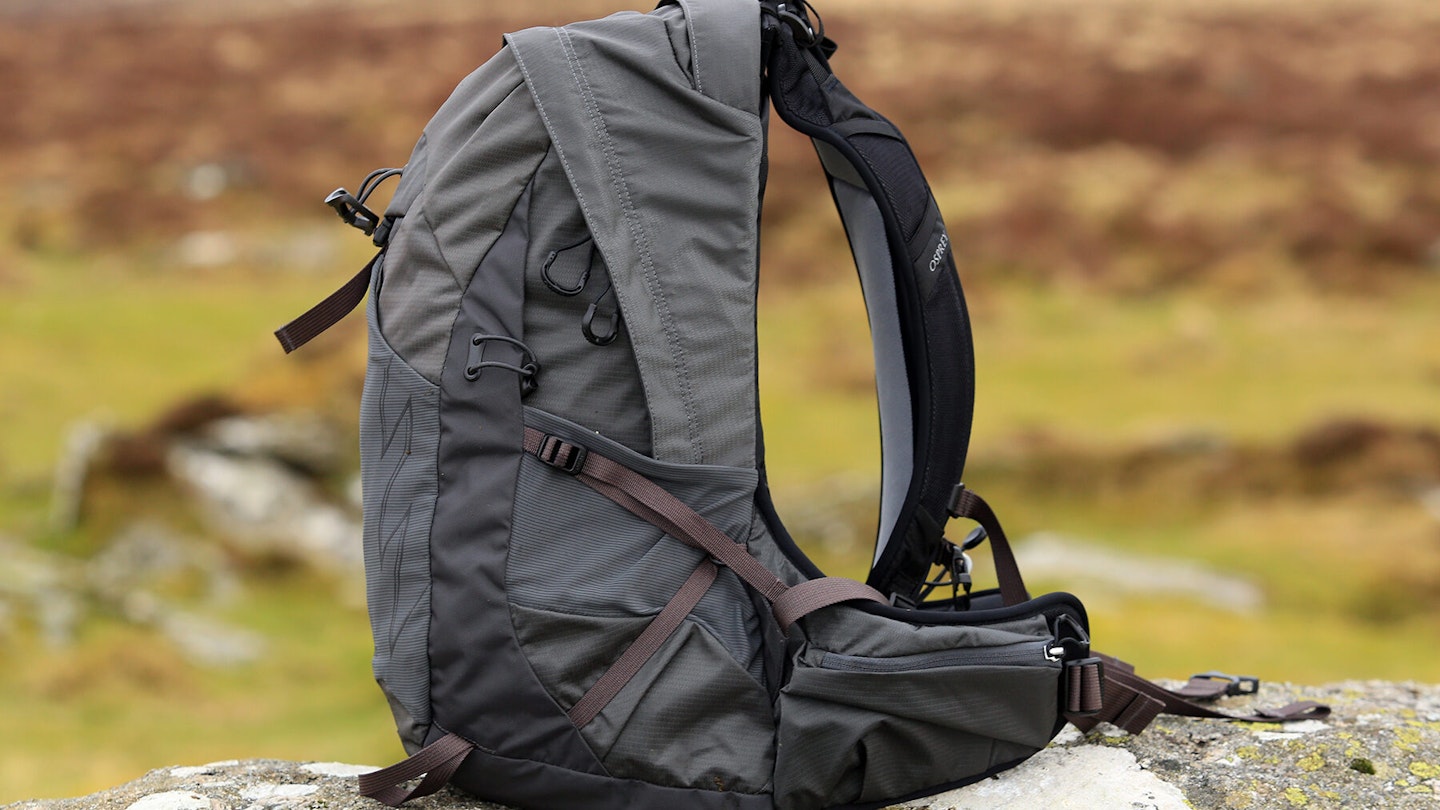
The dimensions of the Talon 22 are about average for a day-hiking pack: 49cm height x 30cm width x 20cm depth. It’s nice and narrow, so it doesn’t impede arm movements, especially if scrambling.
At 901g empty, it’s not the lightest day-pack – but it’s by no means the heaviest either. The weight can be attributed to all the premium features onboard, such as the large hip-fins and the adjustable yoke. But we find that the weight is so well dispersed on the go that these extra grams are barely a worry.
The 22L stated capacity is fair enough; in fact we found it could take pretty much the same amount as we stowed in the roughly comparable Gregory Miko 25, including:
Water bottle
First aid kit
Hat and gloves
Lunch drybag (with snacks stored in hip pockets)
Valuables drybag
Waterproof jacket or insulator
Fleece jacket
One extra warm layer
Essentials mini-kit: compass, pen, pencil, head-torch, whistle, spare batteries, tick remover, mini insect repellent and mini sunscreen
Small microfleece towel
Walking poles (external)
Cycling/climbing helmet (external)
Features: lid, straps, pockets, and weather protection
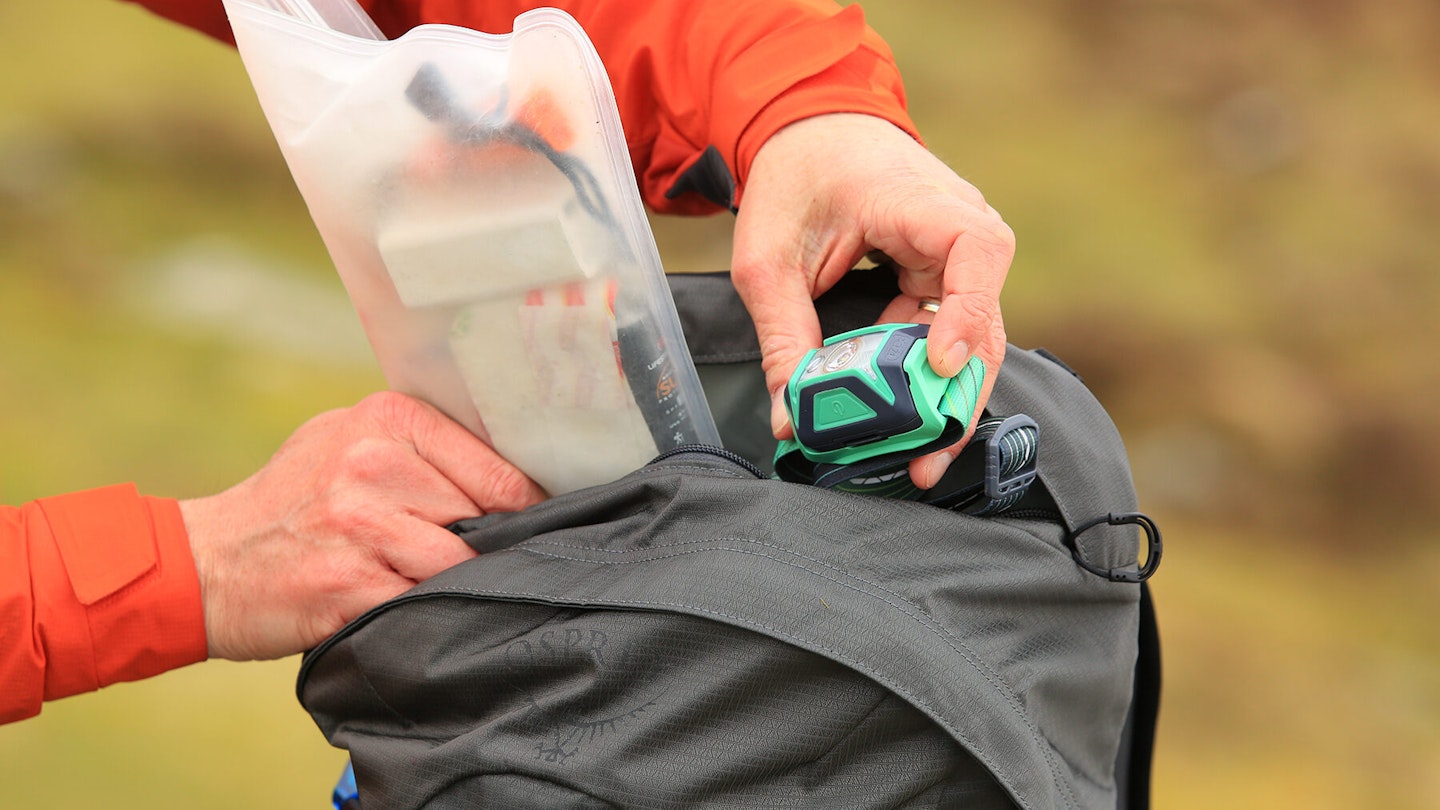
Shop this product
This is another area where the Talon 22 excels. Pretty much every feature you could want in a daypack is here.
Aside from the main compartment there are eight extra pockets/compartments, including:
- Good-size secondary compartment at the top (see photo above, handy for the bag of essentials eg compass, batteries, head torch etc)
- Large front flap with compression strap and clip closure, which will hold a lightweight fleece
- Internal hanging mesh pocket with zip, inside the main compartment
- Two stretchy bottle pockets, one on either side. They are perhaps a little shallower than on similar packs, but they still hold our tall 0.6L Regatta Tritan water bottle securely
- An expandable poppered pocket on the harness. This will hold some energy gels or a small GPS, but annoyingly is not large enough for a modern smartphone with outdoor-suitable case
- A huge zipped pocket on each of the hip-fins (below), which can easily hold small meds, a Lion bar, a couple of energy gels and the car keys
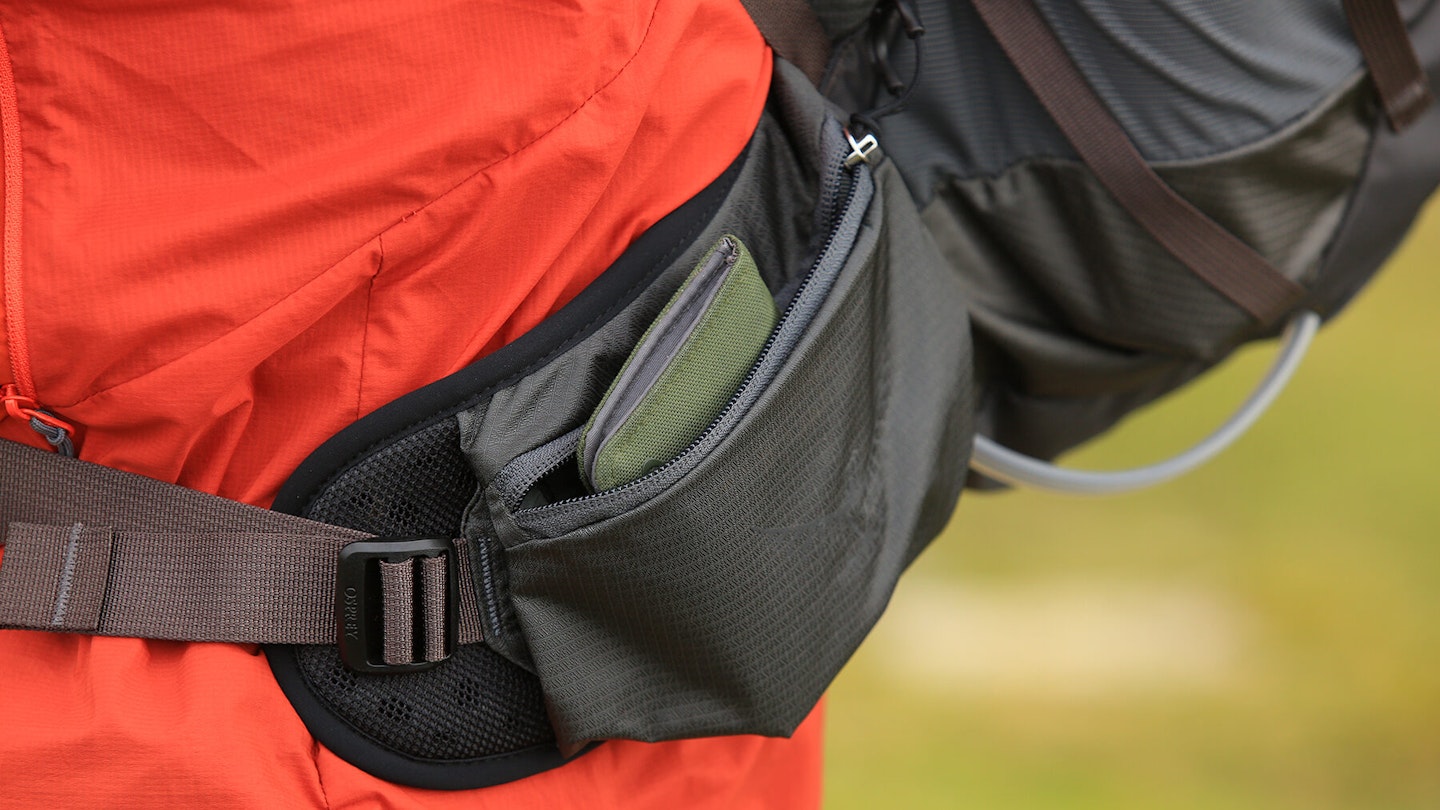
Shop this product
There is an external compartment behind the back panel for a hydration bladder, although with the pack being small, a full reservoir does make the load bulge somewhat.
You also get Osprey’s ‘stow-on-the-go’ trekking pole loops, which secure the poles at the harness and the bottom edge of the pack, meaning you can access them without taking the pack off (although a pair of poles will also sit happily in the side pocket, secured by the compression straps, if you don’t want the poles bobbing about near your torso).
There is also a drawcorded clamp for a cycling or climbing helmet (Osprey call it LidLock), and a clip for a bike light.
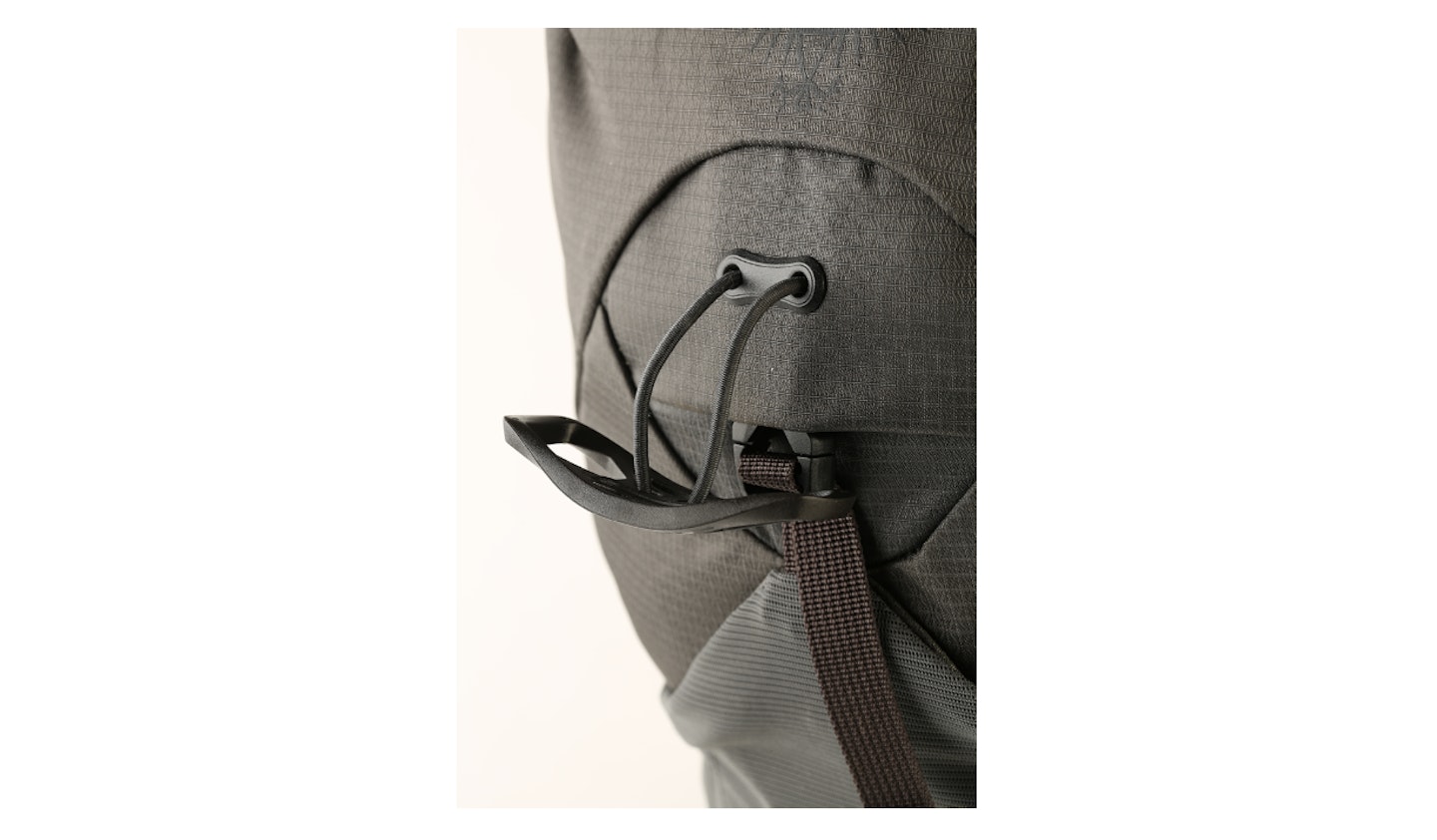
The compression straps are slim but sensibly placed so they don’t obstruct the track of the main zip, and the zip pulls are large, sturdy rubber loops – no problem to use with cold hands or gloves on.
The only real omissions are weather protection. There is a DWR coating on the fabric, but no raincover. The zips are housed beneath fabric flaps, but these aren’t much protection against even light rain. If you know the day ahead will bring rain, best to use a rucksack liner or stash all the contents in drybags. (Also note that its stablemate the Stratos 24 does include a raincover.)
Shop this product
Apart from that, pretty much everything is where is should be and it all works. The worst you can say is that the pack may be too fussy for those who prefer a more stripped-back, minimalist hiking pack.
Verdict
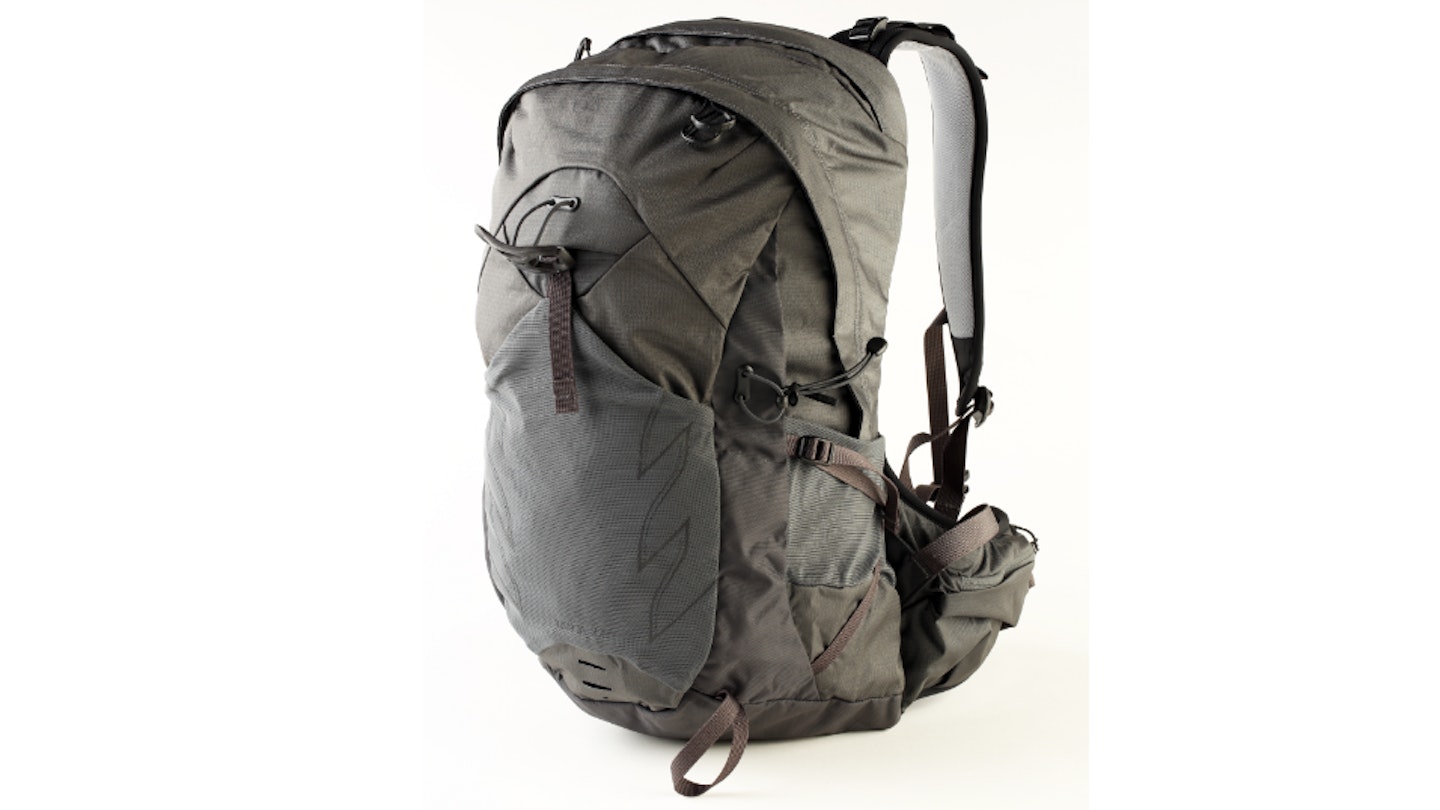
Some things are successful for a reason, and the Talon 22 is a prime example. While it may be too fussy for some tastes, and lack the supreme breathability of its Stratos stablemate for those who run hot, the Talon is a remarkably clever rucksack that can be pretty much all things to all walkers. It works on the simplest walk through farmland or woodland without feeling like overkill, but also performs admirably on more challenging and technical terrain, e.g. mountains and rugged coasts.
Other than fussiness, its only stumbling block may be the price, because you can of course get good day-packs of a similar size for a fair bit less (Vango Apex 25 £60, Mammut Lithium 25 £110). But if viewed as an investment that is likely to last and provide enduring comfort for many miles over many years, that £135 price tag becomes much easier to justify.
Yep, there’s a reason this pack sells like hotcakes. It’s really, really good.
How we tested
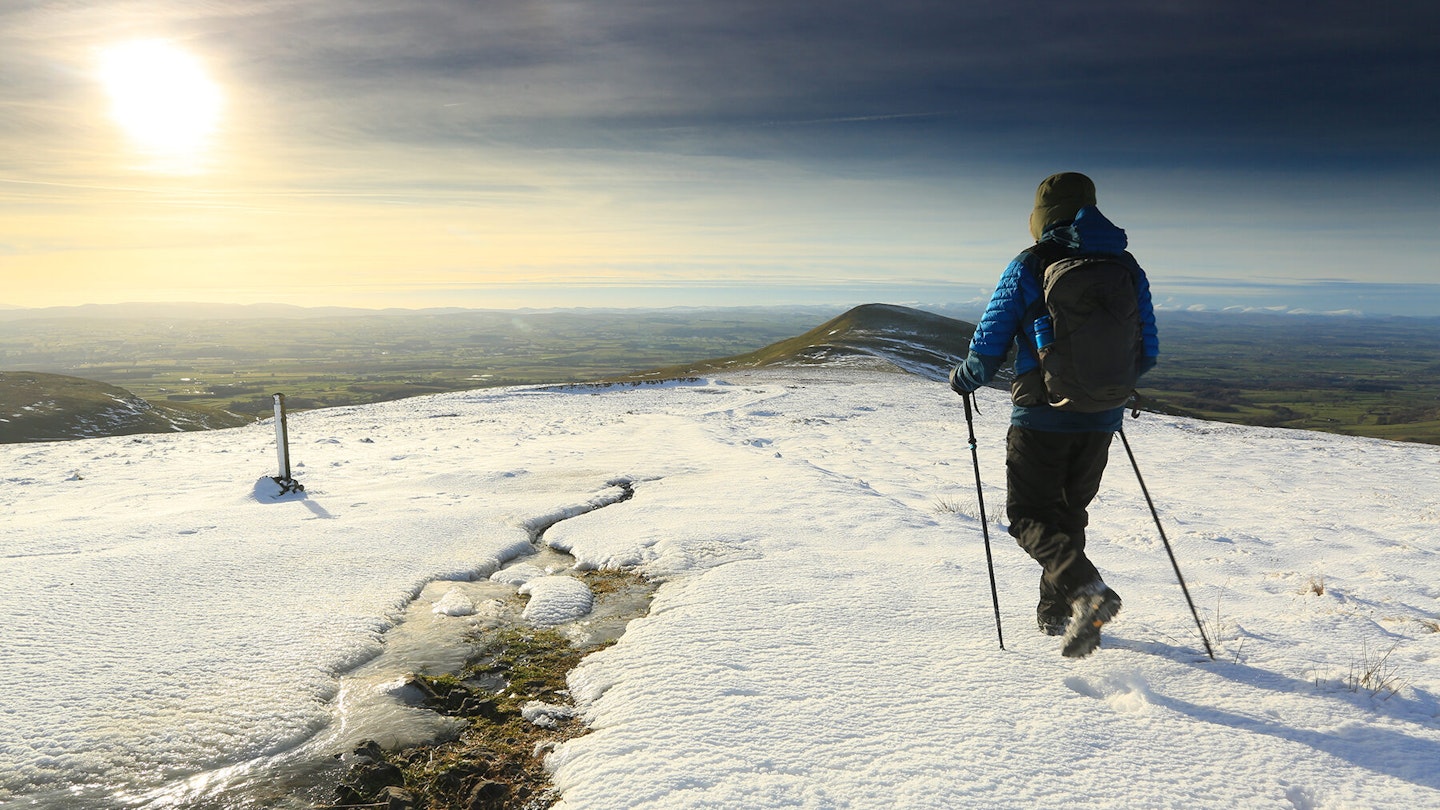
The Osprey Talon 22 backpack was tested and reviewed by Nick Hallissey in the Lake District, the North Pennines and on Dartmoor, as part of a comparative group test for Country Walking Magazine. Nick is the Deputy Editor of Country Walking and has been testing kit for it and Live For The Outdoors for nearly 20 years, exploring and telling stories from the length and breadth of Britain, and overseas.
